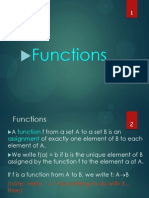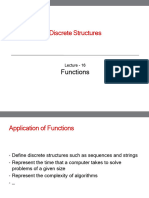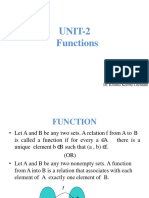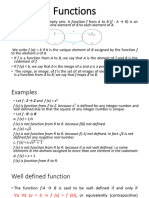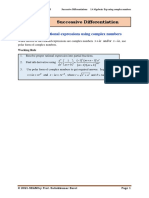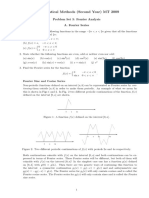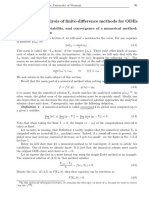0% found this document useful (0 votes)
45 views25 pagesLecture 7 (I) CSC510 Functions
The document defines and provides examples of functions, including:
- Functions map elements from a domain set to a codomain set.
- Functions can be represented using roster, set-builder, tabular or graph notation.
- The domain is the set of inputs and codomain is the set of possible outputs.
- Functions can be injective (one-to-one), surjective (onto), or bijective (both one-to-one and onto).
- The identity function maps each element to itself, and the inverse of a bijective function reverses the mapping.
Uploaded by
2023400072Copyright
© © All Rights Reserved
We take content rights seriously. If you suspect this is your content, claim it here.
Available Formats
Download as PDF, TXT or read online on Scribd
0% found this document useful (0 votes)
45 views25 pagesLecture 7 (I) CSC510 Functions
The document defines and provides examples of functions, including:
- Functions map elements from a domain set to a codomain set.
- Functions can be represented using roster, set-builder, tabular or graph notation.
- The domain is the set of inputs and codomain is the set of possible outputs.
- Functions can be injective (one-to-one), surjective (onto), or bijective (both one-to-one and onto).
- The identity function maps each element to itself, and the inverse of a bijective function reverses the mapping.
Uploaded by
2023400072Copyright
© © All Rights Reserved
We take content rights seriously. If you suspect this is your content, claim it here.
Available Formats
Download as PDF, TXT or read online on Scribd
/ 25






















